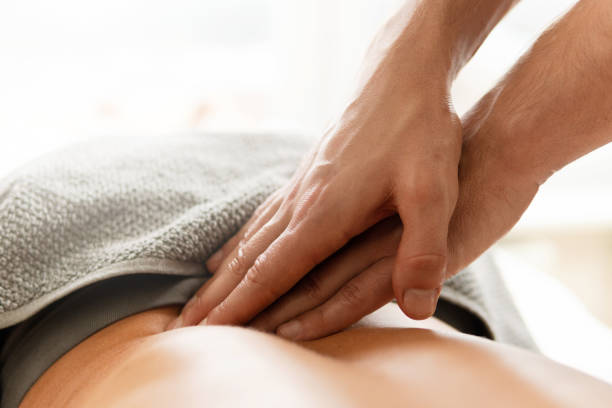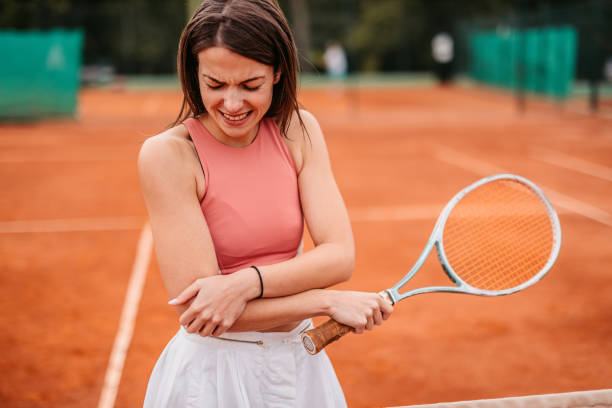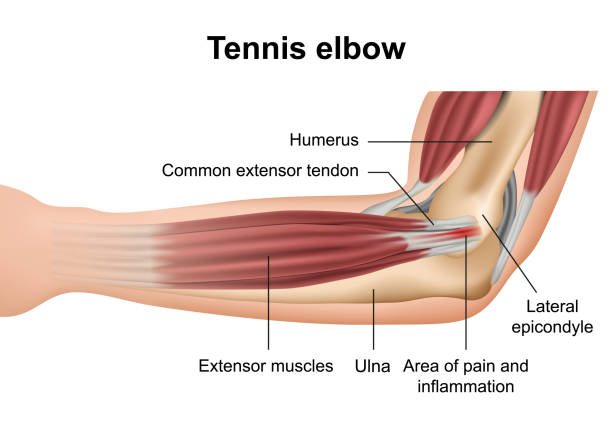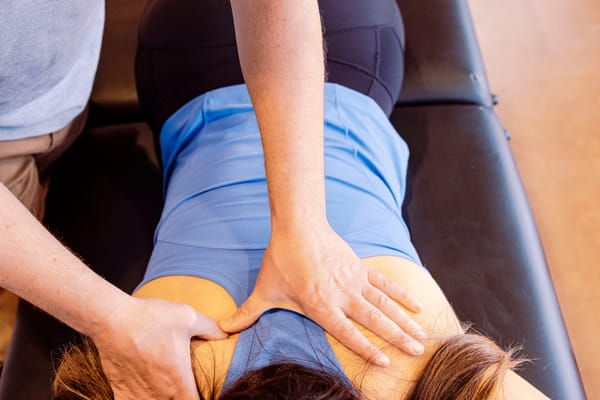
Tennis Elbow - Massage Austin
Tennis elbow, or lateral epicondylitis, is like having a squeaky hinge on a frequently used door.
Iler Method® Massage Treats Tennis Elbow Pain
Like traditional trigger point therapy, the Iler Method targets specific muscle tension and tender points that contribute to discomfort, focusing on areas affected by the tennis elbow. Our clinical massage method effectively releases tension in the forearm and elbow by applying precise pressure and specialized techniques.
The following techniques specifically address muscle tension, alleviate pain, and improve the range of motion and flexibility in the elbow and forearm areas:

Straight Fingers -
Using two or more straight fingers, typically the middle and ring fingers allows for precise pressure application on muscles like the extensor carpi radialis brevis and extensor digitorum. This technique effectively targets fine trigger points and adhesions in what is often an overuse injury. It starts with short durations of 5-10 seconds and gradually increases as the muscle tissue warms up to address deeper points, addressing the underlying causes of common injuries like tennis elbow.
Hand and Fingers over Fingers -
This technique applies balanced, amplified pressure to deeper, hard-to-access active trigger points in areas like the forearm extensors. By placing one hand over the opposite hand, this method allows the top hand to add pressure to the bottom hand's fingers, combining force with sensitivity for effective treatment of conditions that may mimic the symptoms of carpal tunnel or rheumatoid arthritis.
Thumb Over Thumb -
This technique is particularly effective on dense, layered soft tissues around the elbow. By using one thumb pad to apply pressure over the other, this technique not only increases the possible pressure but also reduces the risk of injury to the therapist's thumb joint, making it a precise, effective, and safe tool for deep tissue work on both the therapist and client.
What is a Tennis Elbow?
Tennis elbow, or lateral epicondylitis, is like having a squeaky hinge on a frequently used door. The hinge starts to complain because it's overworked and under-lubricated, similar to how the tendons in your elbow begin to ache when the same wrist and arm motions repeatedly stress them they're. This discomfort is widespread among those who repeatedly use their wrists and forearms, like tennis players, hence the name.
Just as a busy door gets squeakier with more use, any activity miming the motions of tennis—like pickleball, cooking, or yardwork—can make the elbow's "hinge" increasingly painful. The tendons, like the metal parts of the hinge, can only handle so much friction before they start to protest, leading to the characteristic pain of the tennis elbow. We treat many of these conditions with the Iler Method, applying specialized techniques to help alleviate the pain and restore function effectively.

What Are the Symptoms of Tennis Elbow?
- Worsening pain when performing activities that involve gripping or twisting, such as turning a doorknob or holding a racquet, reflecting issues with grip strength.
- Stiffness in the elbow, especially in the morning or after periods of inactivity, can extend inside the elbow.
- Weakness in the forearm makes it difficult to perform tasks involving hands, like shaking hands or lifting objects, indicating compromised forearm muscle function.
- Medial epicondylitis symptoms can also occur, showing pain around the inner elbow due to similar stress factors.
- Severe pain may be felt during activities that stress the affected forearm muscles and tendons.
- Aching in the elbow area that increases with the use of the forearm.
- Sensations of heat or swelling around the elbow, although visible swelling, is rare.
- Reduced range of motion in the elbow, affecting the ability to extend or flex the arm fully.
- Numbness or tingling sensations may radiate from the elbow down into the forearm and fingers.
- Pain and tenderness outside the elbow may extend into the forearm and wrist, often exacerbated by repetitive motion.
Muscles Associated with Tennis Elbow
Tennis elbow mainly affects the muscles and tendons in your forearm that help move your wrist and fingers. These muscles are involved in actions like lifting your wrist or straightening your fingers. Here are the primary muscles linked to tennis elbow:
- Extensor Carpi Radialis Brevis (ECRB) - This muscle is often the main culprit in tennis elbow. It helps lift and steady your wrist, and its connection point is usually at the elbow, where the pain hits hardest.
- Extensor Carpi Radialis Longus (ECRL)—Like its neighbor, the ECRB, this muscle lifts the wrist but pulls it outwards. It works closely with the ECRB and can contribute to the pain associated with tennis and golfer's elbow.

- Extensor Digitorum - This muscle works on straightening your fingers and wrist. It's typically involved in the actions that can strain the elbow and lead to tennis elbow.
- Extensor Carpi Ulnaris - This muscle helps lift the wrist and pull it inward. It can add to tennis elbow symptoms, especially during activities that involve a lot of wrist movement.
These muscles all come together into a group of tendons that attach to the outer side of the elbow, on a bumpy part of the bone known as the lateral epicondyle. This is the spot where you usually feel the pain of tennis elbow.
Final Thoughts: Tennis Elbow Pain
Tennis elbow, while common among athletes and those engaged in repetitive wrist and forearm activities, doesn't have to be a persistent issue. The good news is that the Iler Method offers a promising solution by targeting the specific muscles and tendons involved in the condition.
Addressing the root causes of discomfort through specialized techniques relieves pain and enhances the flexibility and functionality of the elbow and forearm. This approach forms part of the conservative care recommended for sports injuries and elbow injury treatment.
Our clinical massage approach at the Iler Method is not just about temporary relief; it's about achieving lasting results. Our techniques, such as Straight Fingers, Hand and Fingers over Fingers, and Thumb Over Thumb, are designed to carefully work out the tensions and imbalances contributing to tennis elbow. These methods help our clients regain strength and motion and significantly reduce their chances of recurrence. Depending on the severity of your condition, these conservative treatments can facilitate the healing process towards full recovery.
We aim to help those suffering from tennis elbow return to their daily activities without pain. By integrating our specialized tennis elbow treatment techniques into regular care, we assist our clients in maintaining a healthier, more active lifestyle. This proactive and therapeutic approach ensures that our clients recover and better understand how to prevent future issues related to tennis elbow in the first place.
Disclaimer:
Please note that at Iler Method® Therapy, we specialize in massage therapy and related techniques. All clients must understand that we are not medical professionals, and our services should not be seen as a substitute for medical advice, diagnosis, or treatment. Our practices are designed to support and complement your overall health, but they do not replace professional medical consultation when needed.




